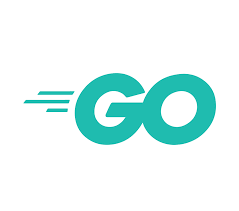
Understanding HTTP REST Communications in Golang
HTTP REST (Representational State Transfer) is a widely used architectural style for designing networked applications. Golang (or Go), known for its simplicity and performance, is a popular choice for building RESTful APIs due to its robust standard library and tools. In this blog, we’ll explore how to implement HTTP REST communications in Golang effectively.
Key Concepts of REST
REST is based on a stateless, client-server communication model and adheres to these principles:
- Resource-based: Resources are identified by URIs (Uniform Resource Identifiers).
- Statelessness: Each request from a client to a server must contain all the information needed to understand and process the request.
- HTTP Methods: REST leverages standard HTTP methods like GET, POST, PUT, and DELETE.
- JSON: Data is typically exchanged in JSON format for its simplicity and compatibility.
Setting Up a Simple RESTful API in Golang
Let’s build a basic RESTful API in Golang to manage a list of tasks. We’ll create endpoints to:
- Retrieve tasks (GET)
- Add a new task (POST)
- Update a task (PUT)
- Delete a task (DELETE)
Step 1: Initialize the Project
First, create a new Go project:
go mod init restapiStep 2: Define the Data Model
We’ll use a Task struct to represent our resource:
package main
type Task struct {
ID int `json:"id"`
Title string `json:"title"`
Status string `json:"status"`
}Step 3: Create the HTTP Server
We’ll use Go’s net/http package to create the server. Let’s define a basic structure for storing tasks:
package main
import (
"encoding/json"
"fmt"
"net/http"
"strconv"
)
var tasks = []Task{}
func main() {
http.HandleFunc("/tasks", handleTasks)
http.HandleFunc("/tasks/", handleTaskByID)
fmt.Println("Server is running on port 8080...")
http.ListenAndServe(":8080", nil)
}Step 4: Implement Handlers
Handle Task Retrieval (GET):
func handleTasks(w http.ResponseWriter, r *http.Request) {
if r.Method == http.MethodGet {
w.Header().Set("Content-Type", "application/json")
json.NewEncoder(w).Encode(tasks)
} else {
http.Error(w, "Method not allowed", http.StatusMethodNotAllowed)
}
}Handle Adding a Task (POST):
func handleTasks(w http.ResponseWriter, r *http.Request) {
if r.Method == http.MethodPost {
var newTask Task
json.NewDecoder(r.Body).Decode(&newTask)
newTask.ID = len(tasks) + 1
tasks = append(tasks, newTask)
w.WriteHeader(http.StatusCreated)
json.NewEncoder(w).Encode(newTask)
return
}
http.Error(w, "Method not allowed", http.StatusMethodNotAllowed)
}Handle Task Updates and Deletion:
func handleTaskByID(w http.ResponseWriter, r *http.Request) {
idParam := r.URL.Path[len("/tasks/"):] // Extract the ID from the URL
id, err := strconv.Atoi(idParam)
if err != nil {
http.Error(w, "Invalid ID", http.StatusBadRequest)
return
}
for i, task := range tasks {
if task.ID == id {
switch r.Method {
case http.MethodPut:
var updatedTask Task
json.NewDecoder(r.Body).Decode(&updatedTask)
tasks[i].Title = updatedTask.Title
tasks[i].Status = updatedTask.Status
w.Header().Set("Content-Type", "application/json")
json.NewEncoder(w).Encode(tasks[i])
return
case http.MethodDelete:
tasks = append(tasks[:i], tasks[i+1:]...)
w.WriteHeader(http.StatusNoContent)
return
}
}
}
http.Error(w, "Task not found", http.StatusNotFound)
}Testing the API
You can test the API using tools like curl, Postman, or any REST client.
Example Requests:
GET all tasks:
curl -X GET http://localhost:8080/tasksPOST a new task:
curl -X POST -H "Content-Type: application/json" \ -d '{"title":"Learn Go","status":"Pending"}' http://localhost:8080/tasksPUT update a task:
curl -X PUT -H "Content-Type: application/json" \ -d '{"title":"Master Go","status":"Completed"}' http://localhost:8080/tasks/1DELETE a task:
curl -X DELETE http://localhost:8080/tasks/1
Best Practices for RESTful APIs in Go
- Use a Framework: Consider using a web framework like Gin or Echo for more complex applications.
- Validation: Implement input validation to prevent errors and potential security vulnerabilities.
- Logging: Use logging libraries like logrus or zap for better debugging and monitoring.
- Error Handling: Create consistent and descriptive error responses.
- Environment Configuration: Manage configurations using environment variables or tools like viper.
Conclusion
Golang provides a straightforward and efficient way to implement HTTP REST communications. By following the steps outlined above and adhering to best practices, you can build robust, scalable RESTful APIs. Whether for a simple application or a large-scale project, Go’s ecosystem ensures that you have the tools needed to succeed.
.jpg)
.jpg)
.jpg)
.jpg)

.jpg)
.jpg)
.jpg)
.jpg)
